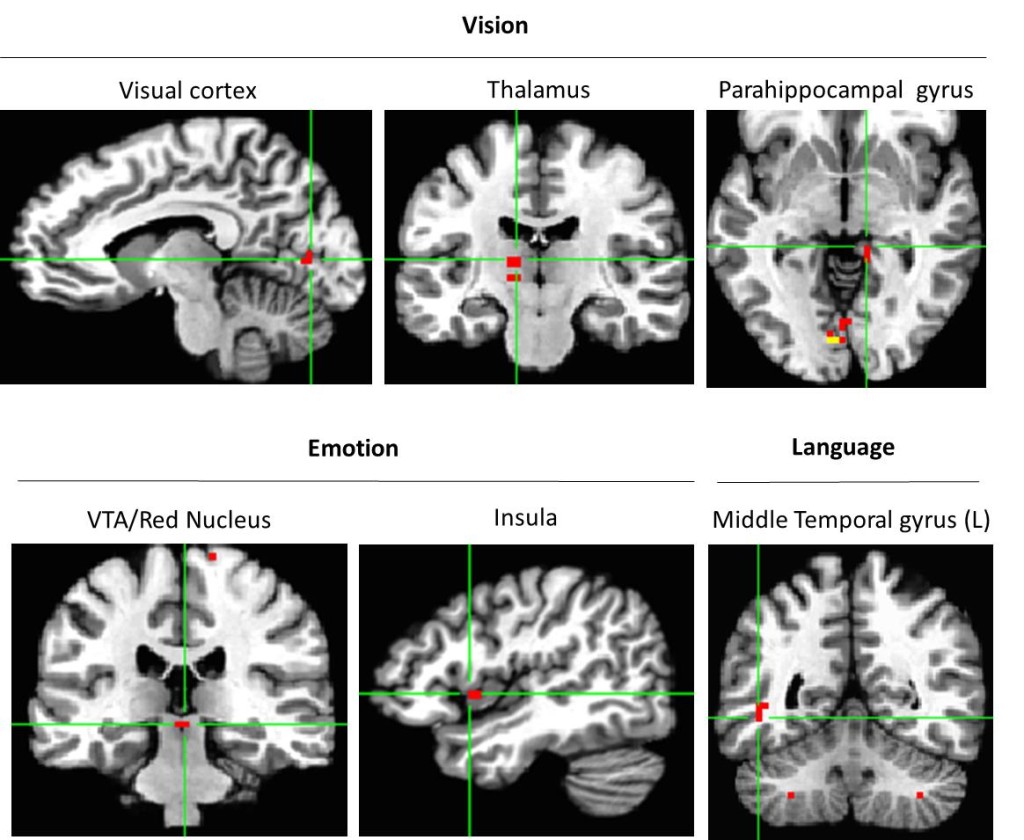From the Desk of Professor Adam Anderson, Director of the Affect and Cognition Lab
October 13, 2016
“Color alters brain activity in ways that extend well beyond color perception to
influence brain regions supporting perception, thought, language, and emotion.”
Study #1: How Color Affects Brain Activity
We have just finished our first study on color and brain activity. In our efforts to understand the role of color on brain function, we examined how different colors influence brain activity patterns. Well beyond color perception, we found colors have distinct roles not only in altering visual system activity, including the primary visual cortex and the thalamus, but also higher level regions including the parahippocampal gyrus (involved in representing the environment) and the middle temporal gyrus (involved in language processing and motion perception). We also found colors influence limbic regions involved in emotions and feelings, including the anterior insula (emotional body states) and the ventral tegmental area (VTA, a region that produces Dopamine, a neurochemical that influences reward processing and cognition throughout the cortex). In sum, color alters brain activity in ways that extend well beyond color perception to influence brain regions supporting perception, thought, language and emotion. Although preliminary, such results provide foundational support for color filters as means to alter brain activity patterns in focal brain regions, and the functions these regions support. These results lay the foundational neuroscience groundwork for future studies looking specifically at Irlen Spectral Filters.
Study #2: How Color Influences Perception, Cognition, and Emotion: Irlen as a Brain-Based Condition
In our current study, we are building upon our earlier findings and undertaking more focused examinations of the influence of color on how information from the eye is represented in the brain, and the transmission of that information to the higher order portions of the brain that support perception, cognition (e.g., language and thought), and emotion. This study also assesses how colors influence brain activity to alter performance on tasks, including perceptual, cognitive and affective judgments. Results from this research will shed light on the neural mechanisms by which color can modulate brain activity and alter brain function. This study also examines the presence of Irlen Syndrome symptoms in the population at large, their neural bases, and whether these patterns of neural dysregulation are altered by color. These findings should help establish how, rather than a retinal visual disorder, Irlen Syndrome arises from dysregulated brain networks, with different brain regions supporting specific symptoms.
Help us support research that helps us better understand Irlen Syndrome, visit www.irlensyndrome.org and pledge your support today. The Irlen Syndrome Foundation is a 501(3)(c) charity organization. Donations are tax deductible. Our federal tax ID is 33-0409023.



